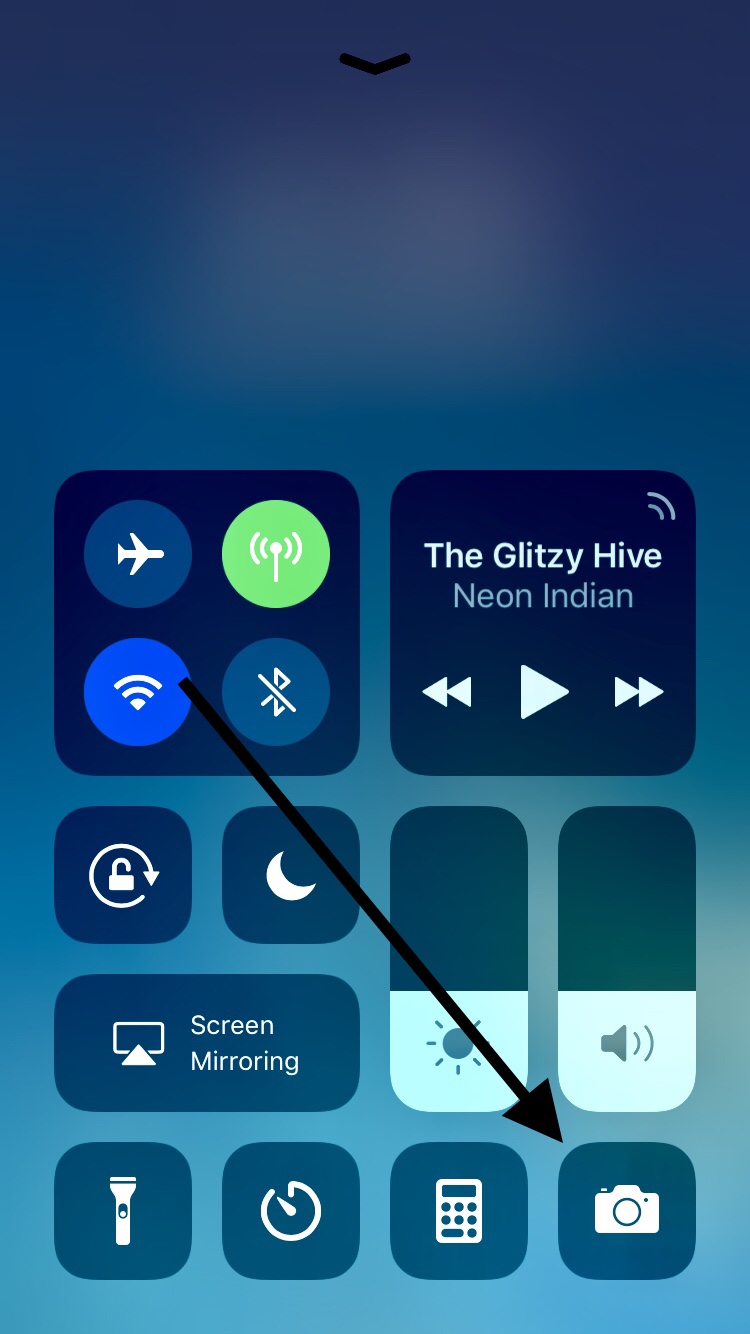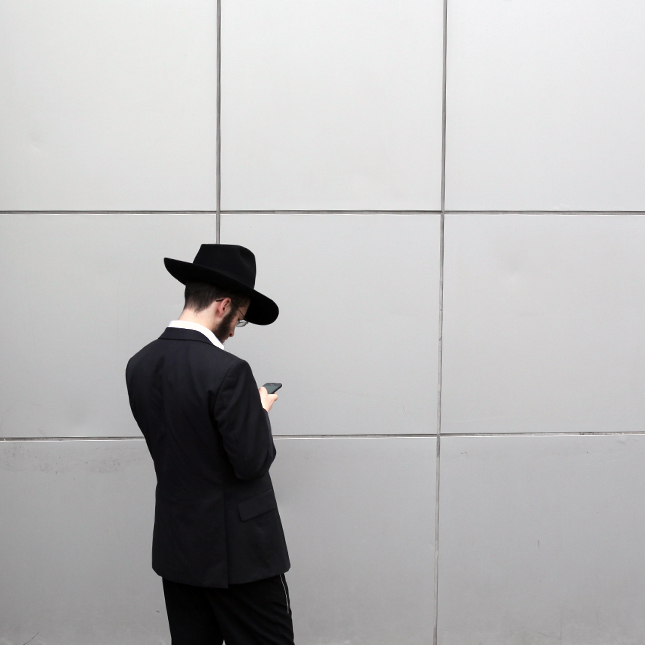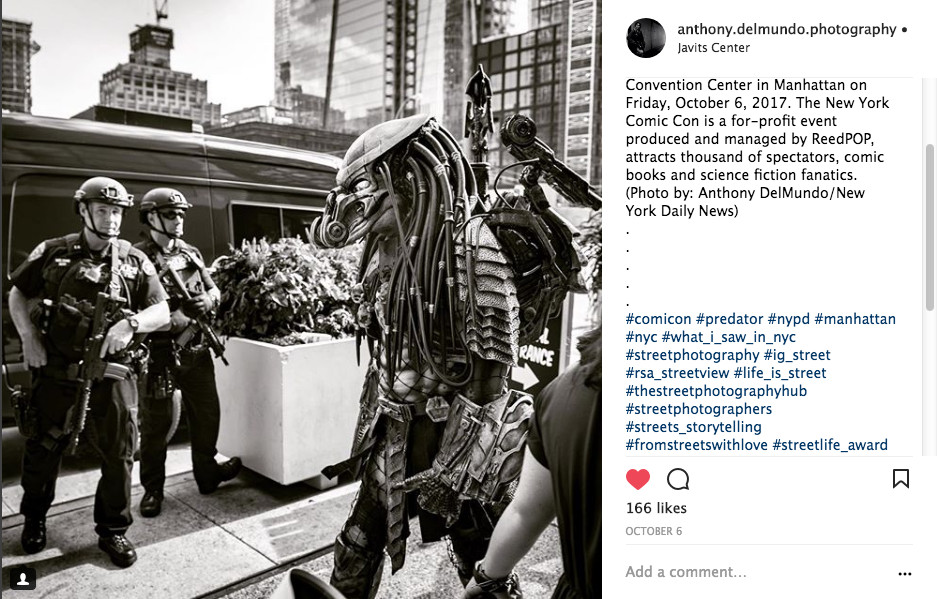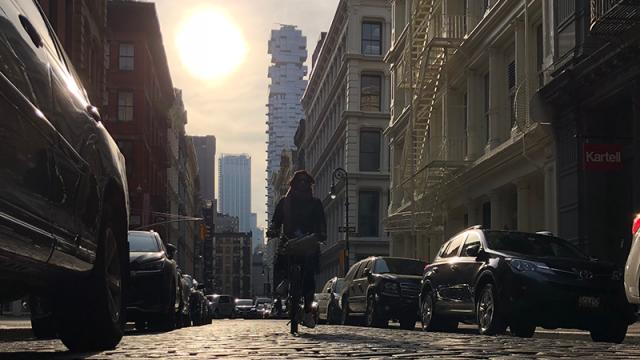I’ve been working as a professional photographer for nearly a decade, but I still get a little nervous every time I head out to take some street shots.
Photo by Ben Fractenberg
The good thing is, street photography is, in some ways, getting easier. New technology like iPhones allow you to take great candid pics while drawing as little attention to yourself as possible.
Here are a few tips I’ve found have helped me take better shots on city streets.
Get Close
There is an old expression in photojournalism that if your photos aren’t good enough, you’re not close enough. This is especially true if you’re shooting with a smart phone, which will lose a lot of quality if you zoom or crop in too much.
Take this shot for example. By getting closer you can see details like lines in the subject’s face.
I took the photo below while covering protests outside Trump Tower after the election. I saw a demonstrator shouting into a bullhorn. I moved out from the middle of the march and pushed my way right in front of him.
You’re also going to have to get over shyness about talking to strangers. I saw Albert while walking around the French Quarter in New Orleans. I approached him with my phone out and casually explained how I was taking photos around the city and was really loving the experience. People will pick up on your enthusiasm. If you seem excited about what you’re doing, then strangers are more likely to reflect that back to you.
We chatted for a few minutes and I found out a little about his story before asking to take his portrait. I explained it was for my Instagram feed and showed him a few of my other shots so he could get a sense of my work. I then took a number of shots while continuing to talk to him so he eventually stopped paying attention to my phone and became less guarded.
Wait For It
Another tried and true strategy is to pre-frame your photo and then wait for the right element to come into view. I was walking around downtown Manhattan recently when I noticed a bright mural reflected in a murky puddle.
That could have been interesting enough, but I wanted to show some movement as well, so knelt down and waited about five minutes until a man walked by wearing all black, which created some more action and contrast to the scene. People can usually tell I’m taking a photo so aren’t too concerned (not that New Yorkers aren’t used to seeing others acting strangely even without an explanation…). But I do often have to let them know it’s OK to walk in front of me.
In the photo below, I waited for someone to walk by who popped against the green wall and I could frame inside the peeled tape rectangle. I thought this woman stuck out, and showed some movement as well.
Keep Your Finger on the Trigger
I try to keep my phone in my hand and stay aware of my surroundings. If you are in a hectic city like New York you never know when something out of the ordinary will suddenly present itself and then disappear just as quickly.
One trick if you’re using an iPhone is that you can access your camera without even having to unlock your phone by swiping up from the bottom and then selecting the camera button on the lower right corner.

This guy (in the photo below) passed me on a rainy day in Midtown. I would have been haunted by his image if I missed the shot. Luckily, I had time to see him approaching from the other intersection, so had time to get my phone out and walk closer to him. It looks like he noticed me, which actually made the photo a little more interesting. If you’re in a crowded street people are usually too preoccupied to notice you, and if they do notice, they’re often in too much of a hurry to stop and ask what you’re shooting.
And if I’m walking around with another camera, I keep it slung over one of my shoulders close to either hand. This way you can also literally shoot from the hip if you don’t have time to look through viewfinder or want to go unnoticed. This requires some practice to get a sense of what will be in the frame depending on how your lens is positioned. It may be best to start out using a wide-angle, if you have one, so you’re more likely to capture your subject. You can always crop in.
Another tip if you’re using a camera is to shoot around f8 so more of foreground and background are likely to be in focus. This increases your odds of getting the shot.
The Decisive Moment
Keeping your phone or camera close at hand will also allow you to capture peak emotion or action. I was at a café when this couple next to me started to intensely make out.
I was quick on the draw and captured this. Creepy? Perhaps. But you’ll have to get over those concerns if you want to capture real human interaction. Sometimes I’ll show the person the photo I’ve gotten, but if it’s for your Instagram feed and documenting the environment you’re in, then you shouldn’t feel the need to show every subject your shot — especially if it’s a very public place.
Chase the Light
Nothing can ruin an interestingly composed photo than bad lighting. Try to go out just after sunrise or about an hour before sunset to catch golden hour, when the light is softer and warm.
Cloudy days create diffuse light so you don’t have harsh shadows. This is a plus if you’re taking portraits, since the light will fall more evenly on your subject. Late fall and winter are also great times to shoot when the sun is lower on the horizon. This will create stark, long shadows and add some more drama to your scene.
For example, I was able to get these shadows while walking around Midtown last February.
Also keep in mind where the sun is if you’re shooting during a bright day. If you’re going to take someone’s portrait, for example, you may want to make sure the sun is behind them so they’re not backlit — unless, of course, you want them silhouetted.
Here’s an example of a backlit subject. You can see how washed out the street is, which can look nice if you’re trying to show it’s a hot summer day.
Think About Composition
Street photography may not afford you the same amount of time to compose a photo, but it’s still important to think about where you’re placing your subjects.
One rule to live by is to try not to always put someone right smack dab in the middle of the frame. You can vary your shots by using techniques like the rule of thirds, which simply means you break your frame into thirds and place your subject or subjects in a third away from the middle or at a point where two lines intersect.
Here’s a pretty literal example of it.

Using this technique can better ensure people looking at your photos will not only pay attention to your subject, but also their environment.
You can also think about how lines going either horizontally or vertically through the shot will naturally draw someone’s eyes through the frame.
In the photo below, the s-shaped lines in the footpath draw you from foreground toward the person holding the cross near the background — who, again, is not positioned directly in the middle.
It’s all About the Details
It’s not just about people and sweeping vistas. Think about those little details that tell us something about time and place.
When I came across it, I thought this would make a funny still life about that once-iconic NYC coffee cup.
I’m not sure what I was trying to capture here, but, you know, things can get pretty gross riding the subways.
We often have pretty universal feelings about things we find funny or out of place. So if you see something you find fascinating, chances are others will, too.
Think About the Captions
A good caption should add to a photo and not just tell us what we already see. If you take someone’s portrait, why not get their name and some details about who they are? That will create more context for your viewers, who will appreciate getting a little more of a story from your feed.
I think the quote in this ‘gram allows the subject to tell about the state of our veteran affairs and economic struggles millions are facing in this country.
If you’re looking to increase your visibility and social media following, think about what hashtags can draw in new viewers. Instagram now allows you to see how many people have already used the tag so you can get a sense of how many extra eyeballs you may reach.
Just don’t overdo it. I find using three or four hashtags is good. Any more than that and people will get annoyed. But if you’re looking to tag as aggressively as possible, some folks will place a single period on a few lines and then have their tags several spaces below their captions, so their viewers are not hit with a block of text.
My colleague Anthony DelMundo is quite adept at this.

Use a Photo App
There are apps out there like Camera+, which allow you to better control your phone’s camera functions. Sometimes, for example, you may want to have the ability to focus on a subject, but then set your exposure to another part of the shot.
I was travelling down the California coast with my wife when we stopped to walk along some Big Sur bluffs. In this shot, I focused on my wife as she walked through a tunnel ahead of me. I then exposed for the ocean in the background so she became silhouetted and the tunnel completely black.
Some of these tips should hopefully get you taking better shots, but also keep in mind that improving as a photographer requires a lot of patience. We’re always learning new techniques and pushing ourselves out of our comfort zone, and the only way to get better is just to get out there and do it!

Comments